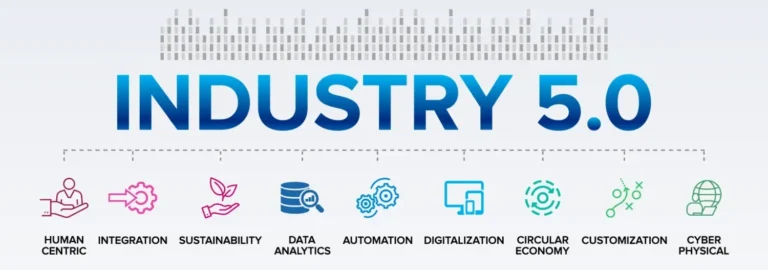Accelerating Digital Transformation: The Need for Speed Strategies
In today’s digital era, businesses must continuously evolve to remain in the competitive market, making digital transformation a vital strategic focus. This entails harnessing digital tools to fundamentally reshape business operations and enhance customer value.
The speed of digital transformation is accelerating exponentially, fueled by progress in technology and evolving customer demands. To keep pace and capitalize on emerging opportunities, businesses must embrace speed strategies. These strategies enable organizations to quickly seize new opportunities, accelerating digital transformation in this ever-evolving digital landscape.
Digital Transformation in the Modern Business Environment
Digital transformation integrates digital technologies across all business functions, prompting significant shifts in business operations and value delivery. It transcends mere adoption of the latest technologies that necessitates a comprehensive overhaul involving people, processes, and systems.
In the contemporary business landscape, accelerating digital transformation is not optional—it is imperative. Rising customer demands for seamless digital experiences (DX) and interactions compel businesses to evolve or risk obsolescence. Digital transformation allows for streamlined operations, enhanced CX, and new revenue streams.
To understand the relevance of digital transformation in the modern business environment, one must identify its primary drivers: changing customer preferences, evolving business models, heightened competition, and disruptive technologies. This kind of transformation equips businesses to thrive in an ever-changing digital realm, setting the stage for continued success.
Challenges Faced During Rapid Digital Transformation
Digital transformation presents numerous business opportunities, yet it is not without its hurdles. Foremost among these challenges is resistance to change. Many organizations are comfortable in their established processes and are usually hesitant to embrace new technologies or alter their operational paradigms.
Moreover, the complexity of accelerating digital transformation initiatives adds another layer of difficulty. The integration of new technologies with existing systems demands meticulous planning, robust leadership, and adept change management strategies, often consuming substantial time and resources.
Furthermore, a shortage of digital skills and expertise within the organization poses a significant challenge. Digital transformation necessitates proficiency in diverse technologies such as artificial intelligence, data analytics, cloud computing, and cybersecurity.
Businesses must prioritize talent acquisition and development to effectively harness these technologies and drive successful transformation efforts. Addressing these challenges head-on is crucial for organizations to navigate the digital environment and realize the full potential of transformation initiatives.
Finally, digital transformation demands substantial investments of time, resources, and budgetary allocations. It is imperative for organizations to meticulously prioritize and allocate resources to ensure the effectiveness of their digital transformation endeavors.
Despite these hurdles, businesses that adeptly navigate these challenges stand to benefit from swift digital transformation, positioning themselves competitively in the digital era.
Speed Strategies for Accelerating Digital Transformation
To expedite digital transformation, businesses can implement several pivotal speed strategies. These approaches aim to empower organizations to promptly respond to market fluctuations, adopt new technologies, and drive innovation. Some of the key speed strategies include:
- Agile and Iterative Approach: Businesses can simplify complex digital transformations by breaking them down into more manageable projects. This agile and iterative methodology allows for quick implementation, short feedback loops, and strategy adaption based on real-time insights.
- Cloud Adoption: Since cloud computing facilitates on-demand access to scalable computing resources and faster development, testing, and deployment of digital solutions, cloud adoption is another key approach that can speed up digital transformation.
- Automation and AI: Employing automation and AI streamlines business processes, optimizes efficiency, and elevates CX. Automation eliminates manual tasks, minimizes errors, and allows organizations to redirect their efforts toward high-value activities.
- Data-Driven Decision-Making: Harnessing the power of data and analytics can encourage informed decision-making through valuable insights. Data analysis helps with trend identification, data-backed decisions, and quick adaption of strategies in response to evolving market dynamics.
- Collaboration and Partnerships: Engaging in collaborative endeavors with technology vendors, startups, industry experts, or other external partners can expedite the digital transformation of a business. Partnerships provide easy access to specialized knowledge, resources, and innovative solutions, enabling accelerated progress toward digital objectives and gaining a competitive edge.
Successful Implementation of Speed Strategies
Multiple organizations have effectively utilized speed strategies to accelerate their digital transformation, showcasing how businesses can harness these approaches to foster innovation and achieve swift transformation:
Case Study 1: With more than 100 years of history, a leading paint manufacturer in India was stalled in terms of its digital presence and online growth. While ranking high in the industry overall, the company’s digital performance was weak. This company came to HGS looking for a 360-degree digital transformation and kick-start to digital success. HGS answered with a digital strategy and innovation that delivered, boosting the company to its current number 2 position.
Case Study 2: A consumer electronics giant strategically integrated on-cloud technologies for an office-to-home migration with CRM integration, speeding up its digital transformation in the midst of the pandemic. Through application and data migration to the cloud, they were able to rapidly transition from an office to a home setup within a record time of 27 days without disrupting daily business operations and security.
Case Study 3: Meanwhile, in the technological sector, an international IT and telco distribution and supply chain conglomerate capitalized on the power of intelligent automation to optimize its operations across multiple departments. By deploying over 84 bots along its production line to refine its supply chain management, it achieved noteworthy improvements in efficiency, accuracy, cost reduction, and overall productivity.
The above case studies exemplify the efficacy of speed strategies in facilitating successful digital transformation efforts. By drawing insights from these instances, businesses can glean valuable lessons and replicate similar strategies, accelerating digital transformation trajectories in a fraction of the time.
Future Trends and Innovations in Digital Transformation
The future of digital transformation teems with promising prospects for businesses and transformational CX propelled by the relentless advancement in technology. As newer innovations emerge, several key trends are poised to redefine the digital landscape.
- Internet of Things (IoT): Revolutionizing operational paradigms, IoT interconnects devices, sensors, and objects, facilitating real-time data aggregation, remote monitoring, and predictive analytics. This convergence enhances operational efficiency and engenders new business models.
- Artificial Intelligence (AI) and Machine Learning (ML): The vanguards of industry transformation, AI and ML underpin automation, predictive analytics, and personalized CX. Unleashing their potential optimizes workflows, drives innovation, and uncovers untapped opportunities.
- Blockchain: Offering a bedrock of secure and transparent transactions, blockchain finds utility across sectors like finance, supply chain management, and healthcare. It stands to streamline operations, mitigate fraud, and fortify trust among stakeholders.
- Augmented Reality (AR) and Virtual Reality (VR): Redefining consumer engagement, AR and VR immerse users in virtual realms. With applications spanning retail, education, and tourism, these technologies for immersive storytelling and engagement.
- 5G Connectivity: The deployment of 5G networks heralds a revolution of connectivity, promising faster connection speeds, reduced latency, and expanded capacity. This breakthrough opens avenues for transformative applications across various sectors, including autonomous vehicles, smart cities, and remote healthcare, paving the way for unparalleled advancements and opportunities.
These trends exemplify the transformative potential of digital innovation, thus accelerating digital transformation. In turn, this ushers in an era of unprecedented opportunity and reinvention for businesses that are prepared to seize the moment.







